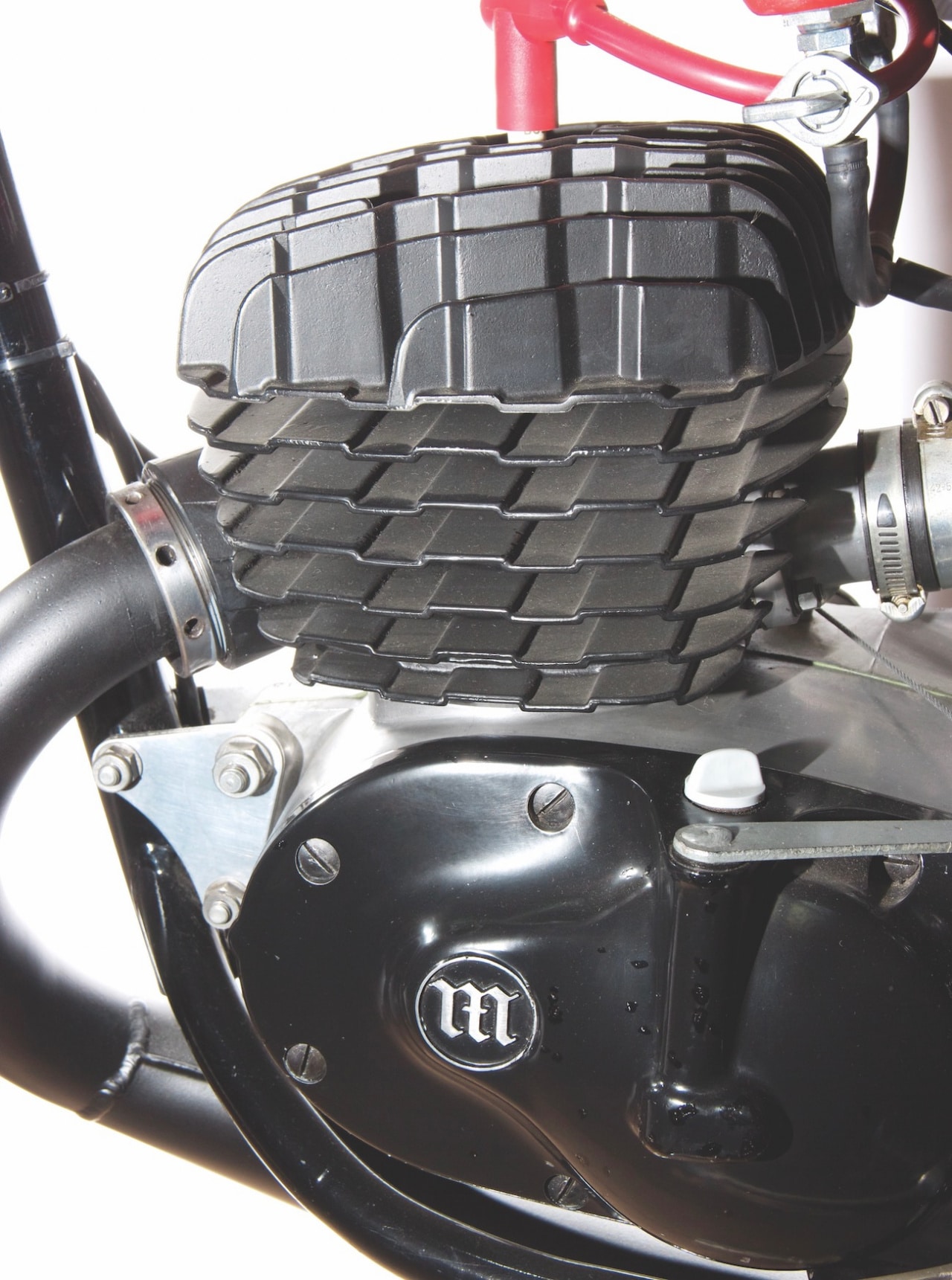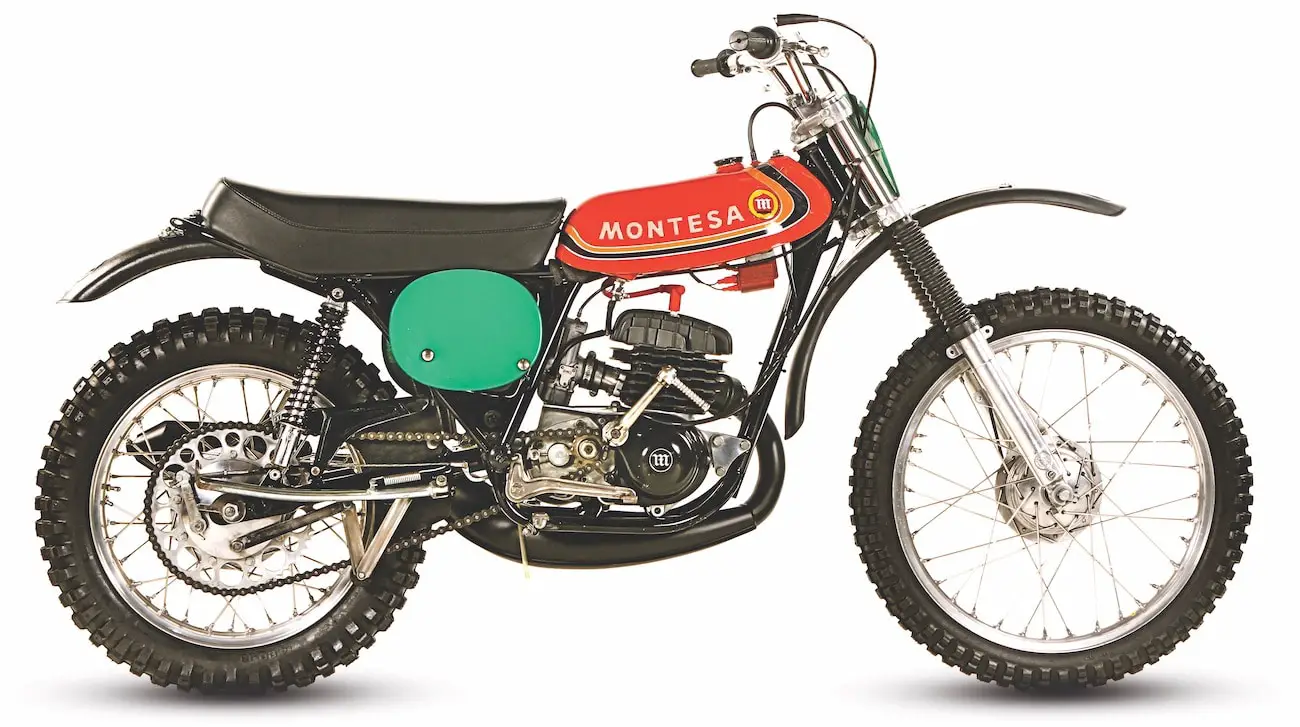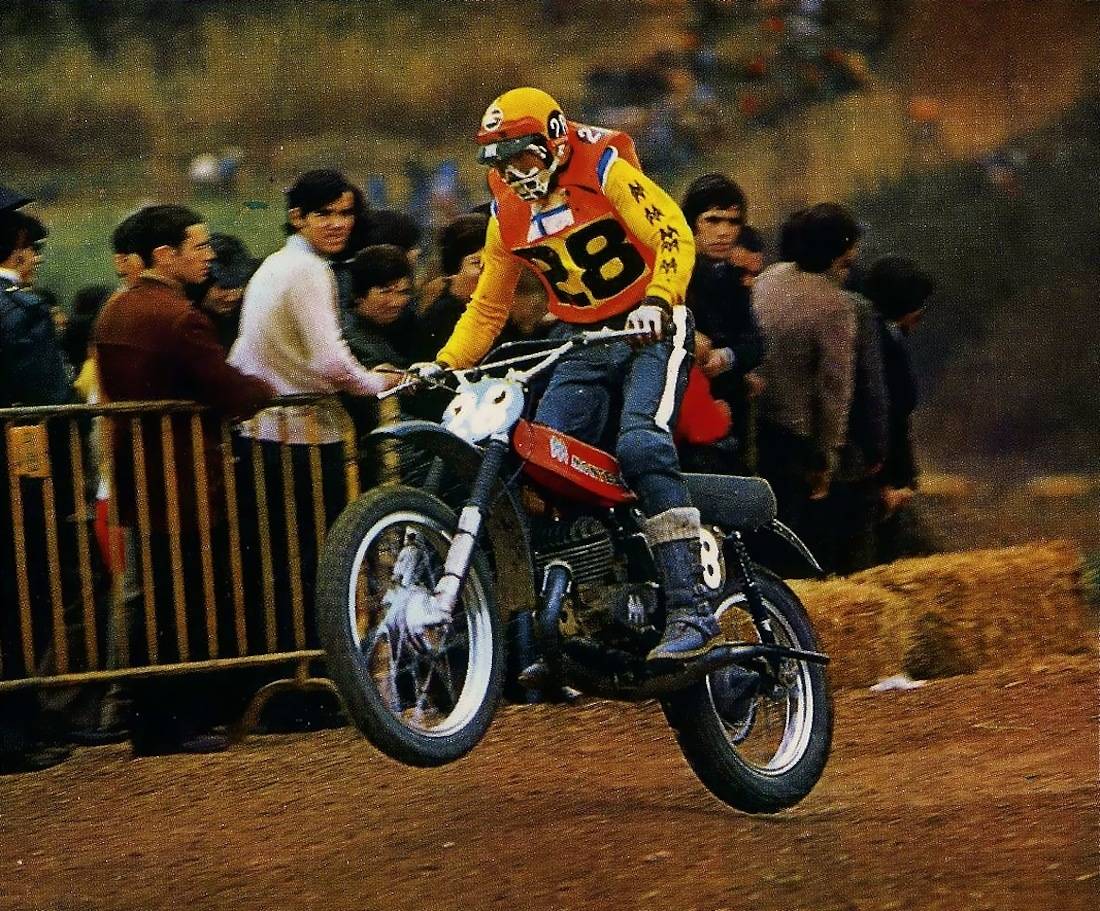CLASSIC MOTOCROSS IRON: 1974 MONTESA 250VR (VEHKONNEN REPLICA)
BY TOM WHITE
Montesa was formed in 1944 by Pedro Permanyer and Francisco Bulto (who later formed Bultaco). They built their first batch of machines based on the very successful Motobecanes of the day. By 1951, their 125cc machines were entered in the ISDT, one of which was ridden by Senor Bulto himself.
In 1963, American entrepreneur Kim Kimball, in association with film star Steve McQueen, began importing the Montesa Impala 175cc Scrambler for the American market. The small operation that started in Kimball’s garage would grow to the point where Montesa had 350 dealers in the United States, and “Viva Montesa” became a well-known phrase. Race car drivers Dan Gurney and Phil Hill became Montesa stockholders.
The “VR” acronym stands for “Vehkonnen Replica.” The VR stood for Kalevi Vehkonnen, the Finnish GP rider who gave Montesa its greatest Grand Prix results, including a fourth in the 1972 250cc World Championships (the first European brand in the standings). And in March of 1973, riding a 360cc prototype, Vehkonnen won a 500 GP at De Duinen, Belgium, beating DeCoster and Mikkola.
Unlike Bultaco and Ossa, who failed to rise to the threat of the Japanese brands, Montesa formed strategic alliances to improve the quality of its bikes. Dentex SA manufactured the gearboxes. Tonova SA manufactured the engines. Comec SA produced the forks and frames, and the Montesa factory in Esplugues carried out the final assembly of the motorcycles. The group of companies had over 650 employees.
The Vehkonnen Replica was first introduced as a 1973 model, but was brought to its full potential in 1974 with the 250VR. It had a 246.3cc engine with a 70mm by 64mm bore and stroke, 34mm Bing carb, Motoplat ignition and a five-speed transmission. Total production of 1973-74 VRs was 2400 units.
 As with all Spanish machines, Montesas were beautiful bikes with their red fiberglass tanks, long seats, black fenders (with an M molded in) and wrinkle fin cylinders and heads. Over the ensuing years, Montesa would change the designation from VR (1973-74) to V75 (1975), VA (1976-77), VB (1978), VE (1979), VF (1980) and VG (1981). It is no surprise that Montesa skipped VC and VD because those acronyms were closely associated with Viet Cong (VC) and Veneral Disease (VD). The 1981 Montesa 414VG was the last Montesa motocross bike to roll down the assembly line, but less than 300 were produced before the factory was shuttered.
As with all Spanish machines, Montesas were beautiful bikes with their red fiberglass tanks, long seats, black fenders (with an M molded in) and wrinkle fin cylinders and heads. Over the ensuing years, Montesa would change the designation from VR (1973-74) to V75 (1975), VA (1976-77), VB (1978), VE (1979), VF (1980) and VG (1981). It is no surprise that Montesa skipped VC and VD because those acronyms were closely associated with Viet Cong (VC) and Veneral Disease (VD). The 1981 Montesa 414VG was the last Montesa motocross bike to roll down the assembly line, but less than 300 were produced before the factory was shuttered.
Honda took control of 85 percent of Montesa with the stipulation that it would keep the factory open and produce Montesa trials bikes. Honda agreed to keep building Montesa motorcycles to gain access to the Spanish market for its Honda street motorcycles. This relationship still exists, but Honda now owns 100 percent of the Spanish company.








Comments are closed.